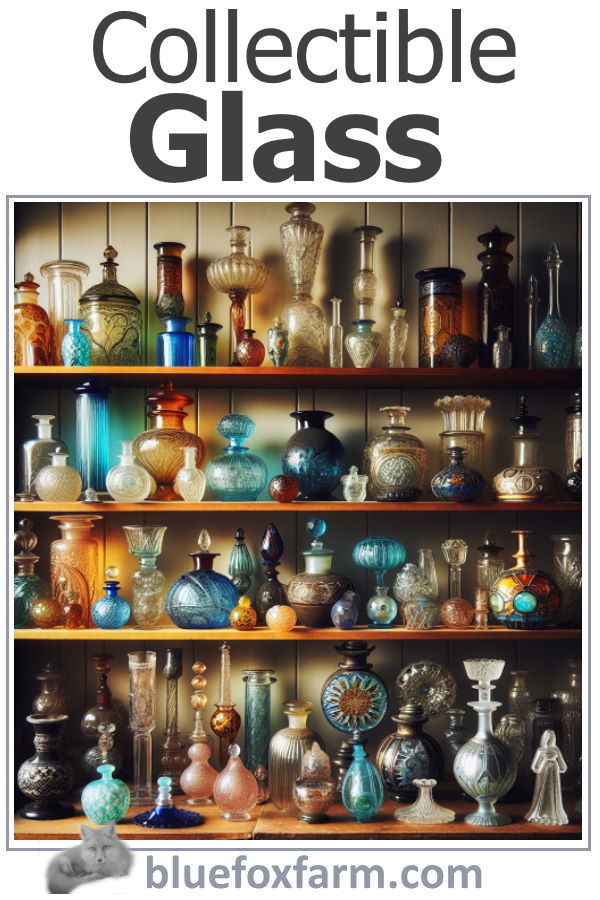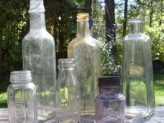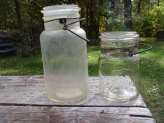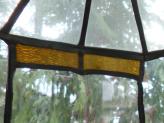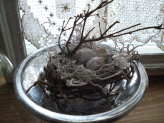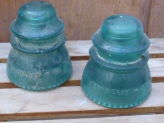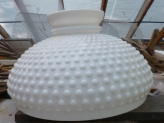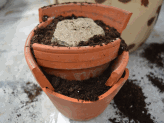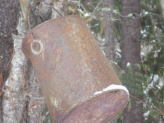Collectible Glass
Found, in all it's Beauty
Many of us have walked past glass displays at flea markets or vintage stores, attracted by the intricate designs and delicate craftsmanship of each piece.
Collectible glass, including vintage and antique pieces, is a fascinating world, rich in history, craftsmanship, and aesthetic appeal. These highly sought-after items range from bottles, glasses, decanters, vases, and a lot more.
Types of collectible glass may include Murano glass, Carnival glass, Milk glass, Depression glass, or hand-blown Art glass, among others.
Each type often reflects the time period, cultural context, and aesthetic tastes of when and where it was created. Care and condition are also important; pieces with chips, cracks, or damage tend to lose their value significantly.
Collecting vintage antique glass can be a rewarding hobby for history and art lovers, but also a significant term for dealers and collectors. It's recommended to invest time in learning and understanding the market, different types and periods of glasswork, to know how to assess authenticity, and its value.
Remember with any type of collection, buying what you love and enjoy should be the first priority, profits or value appreciation is never guaranteed. The true value often lies in the enjoyment you get from these beautiful pieces.
The fascination with collectible glass goes beyond their utility. They are indicative of history, symbolizing societal and cultural changes over centuries. They provide a tangible link to our past – a window into the life and times of different eras spanning many generations.
Becoming a collector of vintage glass or antique glass is not as straightforward as it might seem. It takes knowledge, observation, patience, and passion. Acquiring and caring for such collections requires attention to detail and, in some cases, painstaking diligence.
The journey into the fascinating world of collectible glass begins with understanding its origin. Ancient civilizations like the Egyptians, Romans, and Phoenicians pioneered glassmaking thousands of years ago. Artisans spent years perfecting the craft, passing down their knowledge and techniques generation by generation.
The primary ingredient in glassmaking is silica sand. Adding other materials, such as lime or soda, changes the glass's properties. Hand-blown or hand-pressed methods were traditionally used to create distinctive shapes and patterns, although machine-made glass appeared in the early 20th century.
With these brief insights into the history of collectible glass, it's time to embark on your journey to becoming a collector. The first step is to create a conducive workspace where you can examine, clean, store, and display your collection.
A spacious, well-lit room with proper storage solutions is ideal for a workspace. It could be a spare room, corner of a room, or even a repurposed garden shed. Train your eyes to examine glass in natural light or under a lamp to catch all the subtleties like colors, patterns, and marks.
Invest in some essential tools that'll aid your collection journey.
Your toolbox should include a magnifying glass to inspect pieces closely, soft cloth for dusting and cleaning, acid-free tissue paper for storing fragile pieces, and gloves to handle precious items.
Additional tools like glass identification guides, auction catalogs, and reference books can provide useful information about different types of collectible glass. There are numerous informative online resources and forums where enthusiasts share tips and insights invaluable to a beginner collector.
The curation of a collection of vintage or antique glass pieces is a delicate process, involving more than just purchasing. It's crucial to learn how to identify original pieces, understand their history, and determine their value.
Attention to detail is key in discovering authentic vintage glass. Look for distinctive maker's marks embossed on the base, uneven thickness, waviness, or even minute bubbles – artifacts of manual glass shaping.
In contrast, replicas or later versions often have modern manufacturing tell-tales like seam marks from moldings or a much more impeccable finish. Authentic antique glass tends to reflect a straw or purple tint when held against the light, and it may bear traces of wear, such as scratches or chips, owing to its age.
The presence of manganese, an additive to old glass to remove other colors such as green or brown, makes the glass attain a mauve or purple coloring when exposed to the sun. This is not a fully understood process, but the results are so pretty!
You may favor a particular type of vintage glass – maybe something that ties in with your overall home décor, or your personal likes, or the rarity of the pieces. From Art Deco designs and mid-century modern pieces to Tiffany lamps and Depression-era glass, the choices are vast.
Once you've found an item you're interested in, check its condition before buying. Any cracks, chips, or scratches can drastically reduce the value of a piece. Also, beware of pieces that may have been repaired or altered.
After adding a piece to your collection, appropriate care is essential to maintain and protect it. Regular, gentle cleaning is necessary to keep your glass pieces in pristine condition.
Avoid using dishwashers, abrasive scrubbers, or harsh cleaning agents for your collectible glass. Instead, use warm soapy water and a soft cloth or sponge. Be particularly gentle with painted or gilded glass, which can be susceptible to wear and moisture.
Rinse the pieces thoroughly to remove all soap residues and dry immediately to avoid water spots. Soft lint-free cloths or towels are perfect for drying glass pieces, but make sure to handle them with care to prevent accidents.
Caring for your vintage and antique glass also means protecting it from environmental damage. Avoid displaying or storing your pieces in direct sunlight, as this can cause delicate colors to fade over time.
Protect your collectible glass from extreme temperatures and humidity levels as these conditions can sometimes cause 'glass disease,' a pitting or flaking that's irreversible.
Finding and using old glass pieces in displays are indeed gratifying, but remember to place heavier items on lower shelves and secure top-heavy pieces to prevent toppling. Show off your collection but balance it with the need to protect.
A well-curated glass collection can create visually arresting narratives within your space. Whether full of vibrant colors like carnival glass or showcasing the subdued elegance of milk glass, your collection is a testament to your perseverance and a tale of histories interwoven.
Each piece you add to your collection holds a story: of the skilled hands that crafted it, its journey through time, and finally your discovery of it. As you learn and grow with your collection, you become a steward of these stories, cherished history preserved in translucent beauty.
Treasures need not be part of a large collection either; an individual vintage glass or antique piece can become a focal point. For those with a passion for rustic touches, your garden shed, filled with other such treasures, may just be the perfect place to showcase this singular piece.
The beauty of collectible glass is that, like a garden, it speaks of growth, the passage of time, and the joy of discovery. Each piece captures specific moments and styles in history, adding a timeless allure to your abode or garden space.
Much like the rest of your decor, your vintage or antique glass pieces require tending. But don't let the task daunt you. Learning how to care for this exquisite collectible glass brings a sense of achievement, similar to the first bloom springing from a carefully nursed seedling.
From flea markets to online auctions, from a single color theme to different styles, your collectible glass journey can be as expansive or as focused as you want it to be. But ultimately, it's about the satisfaction and enrichment you attain through this intimate engagement with history and craftsmanship.
Whether you possess one cherished piece passed down through generations or boast a collection spanning different epochs and continents, every bit of vintage and antique glass carries a legacy. It's up to you to discover, narrate, and maybe even shape this continuing saga.
Building up a collection of collectible glass can be a slow process, taking months or even years to acquire each piece. But the thrill of hunting down the perfect piece, the satisfaction of possessing an item of timeless beauty, and the pleasure of knowing that each piece evokes a bygone era make it a worthwhile endeavor.
As you grow as a collector, you'll find that each piece of vintage glass you come across holds a certain charm, a story waiting to be revealed. With every visit to a trade fair, every scroll through an online auction, you're stepping into a new chapter of your ongoing adventure.
Learning about different forms of antique glass, understanding
their unique features, marks, production techniques, and sometimes even
tracking their origin, can all impart a sense of fulfillment.
Displaying your collection effectively is as vital as nurturing it.
Try different arrangements, play with light and shadow, group or isolate pieces to see what works best.
As you bring home each piece of vintage or antique glass, remember that it's not just about acquiring an item. It's about cherishing the artistry behind it, understanding its place in history, and preserving its legacy.
Each visit to a garage sale, an estate auction, or a
flea market, or each hour spent rummaging online, can bring you one step
closer to finding a hidden gem.
In the end, it's essential to remember that the value of collectors' items is often subjective. While a piece's monetary value may be significant to some, the true charm of vintage and antique glass might lie in the enjoyment it provides to you, the collector.
In a world that's racing towards the future, antique and vintage glass stand as elegant reminders of our history.
Slow down and admire their timeless beauty, sense their ancient stories, and appreciate the joy of owning something that has witnessed the passage of many generations.
In conclusion, the journey to becoming a collector of vintage and antique glass is as satisfying as it is enlightening.
With careful curation, appropriate care, and thoughtful display, you can let every piece in your collection shine, telling an ancient story anew from their place in your contemporary world.
Learn what it takes to be creative - we all have the gene but how do we develop it? Get the free guide!
Fill in the form below for your copy;
(Don't be disappointed - use an email address that will accept the free download - some .aol email addresses won't.
If you don't see your download within a few minutes, try again with another email address - sorry for the bother.)
